Share this
Miriam Beichert (b.1999), lives and works in Stuttgart, Germany. She last studied in the class of Daniel Richter at the Academy of Fine Arts Vienna. Beichert revisits the era of heavy, brick-like phones with a feeling of nostalgia while reflecting on the aesthetics of consumerism. Her paintings are portraits of different phone models, paying homage to outdated electronics that once served as the primary means of communication. With blurry lines and blackout screens, the phones appear as an unclear memory, a notion we cannot readily recall.
Text courtesy of NBB Gallery.
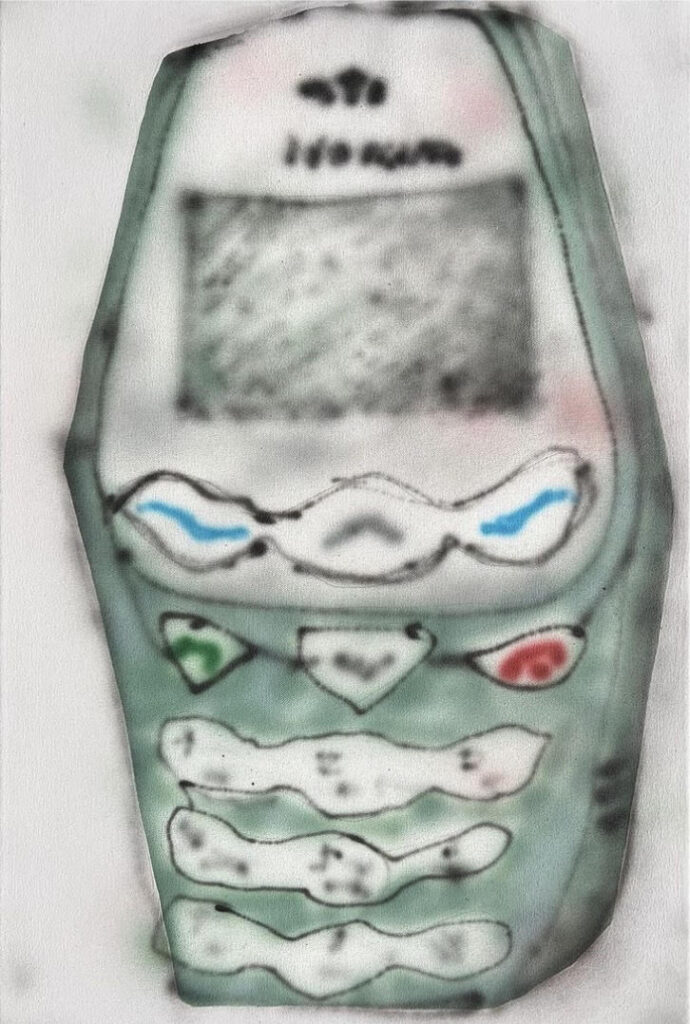
Hi Miriam! Thank you for sitting down with me! First question that I always ask. How does a regular day look like for you in Stuttgart?
Miriam: Hey Rubén, I appreciate the opportunity! Crafting a routine that suits both my professional and personal life has been crucial for my mental well-being. Typically, I try to rise early, knocking out any errands in the morning to clear the path for focused work at the studio. There, I delve into ongoing projects, tackle new ones, handle emails, and indulge in a mix of podcasts, music, Instagram scrolling, or even contemplative moments just staring at the wall. By around 4 or 5 pm, I wrap up at the studio, recharge with a good meal, and enjoy quality time with my girlfriend. Yet, the creative gears keep turning – even before bedtime, my mind buzzes with ideas and reflections on unfinished paintings.
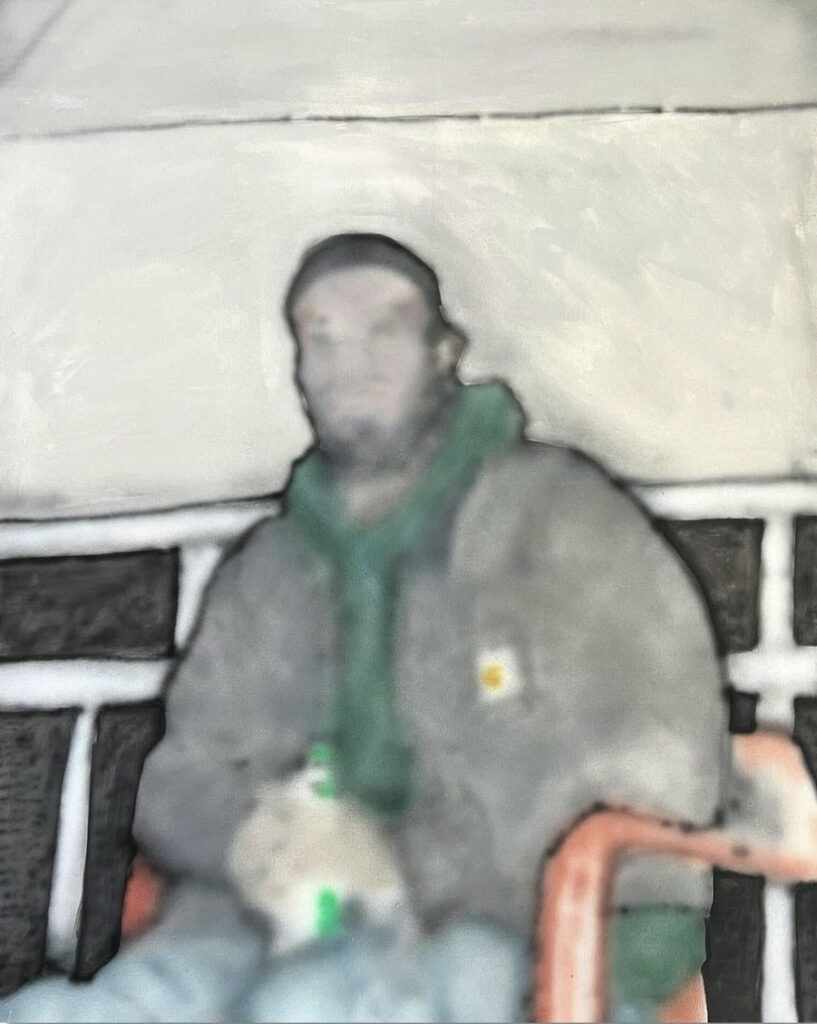
I’m curious. Growing up, what kind of kid were you? What did you enjoy doing, and how did you spend your time?
Miriam: As a child, I was a bit of a reserved, pale kid who took some time to open up. Most of my days were spent either exploring the woods or constructing entire LEGO cities. At the tender age of five, I picked up the violin, venturing into other instruments as well. I always gravitated toward diverse forms of creative expression, forging my path to self-discovery.
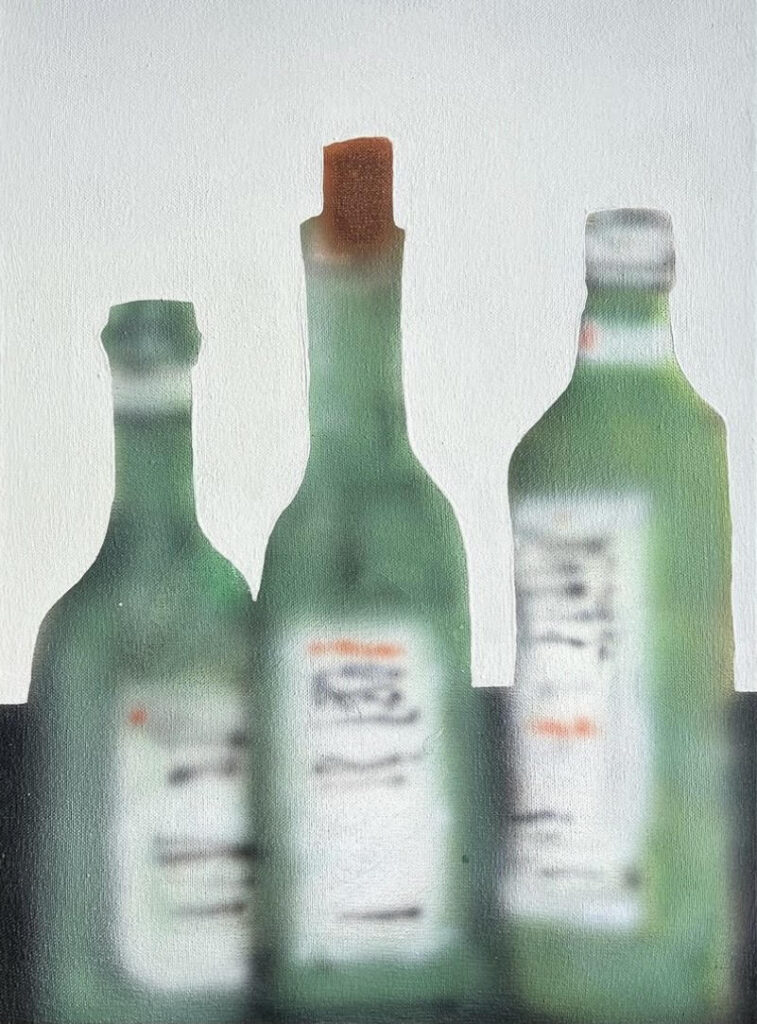
So when did you start painting? And when did you start taking becoming an artist serious?
Miriam: Like many others, expressing myself and seeking understanding has always been a deep-seated desire. As a queer individual, navigating adolescence brought feelings of not belonging in this world, thinking that something is wrong with me. Around the age of 16, I discovered solace in creating collages with photos, scribbles, and newspaper clippings. Experiencing that “creative high” for the first time was euphoric, and I’ve been on this artistic journey ever since. No other pursuit offers me the level of self-realization that art does.
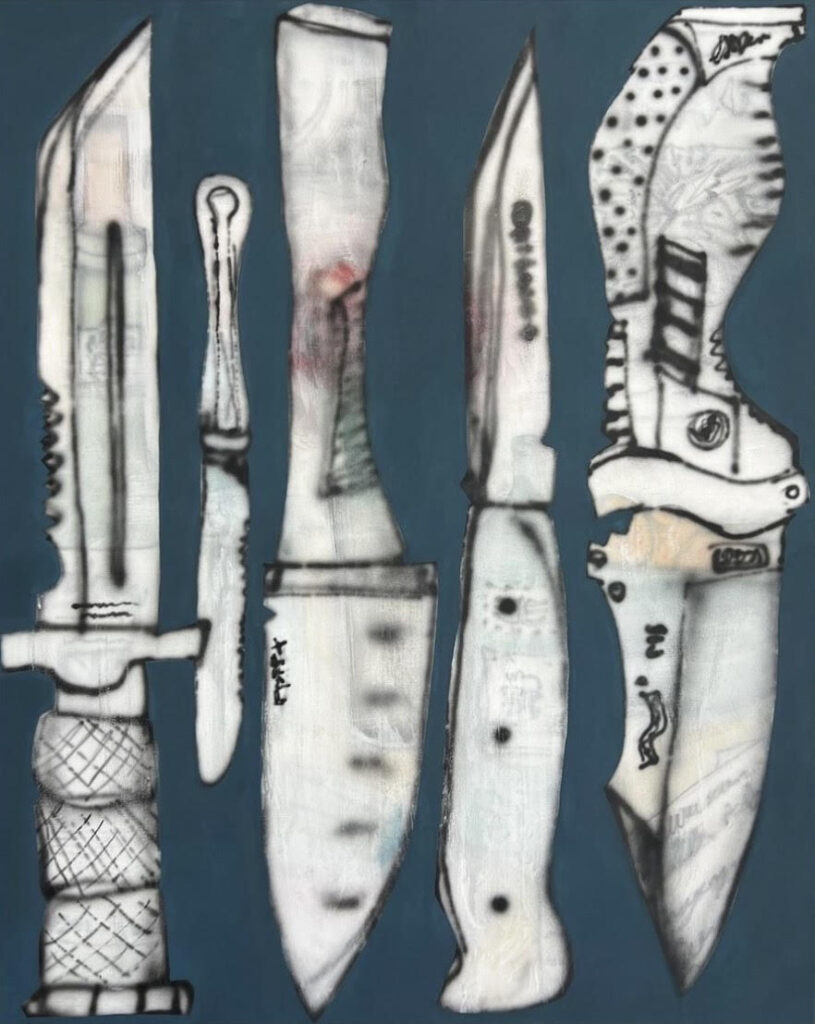
And when did you start developing your recognizable style with blurry lines and matte colors? And what made it your preferred look?
Miriam: Memory is a significant theme in my work, drawing inspiration from personal experiences, surroundings, internet culture, the past and present. For a long time I have thought about how memories could be translated onto the canvas. In 2020, I experimented with the airbrush, a pivotal moment in my artistic evolution.
Cellphones, knives, watches, shirts, cigarette packs etc… What makes something like everyday objects worthy of gracing one of your canvases?
Miriam: By placing ordinary objects in a different context, they can acquire new significance and a different feel to them. This artistic maneuver allows for symbolic interpretations and fresh perspectives, elevating the value of these everyday items, also aesthetically. It is not just about the “what”, but also the “how”.
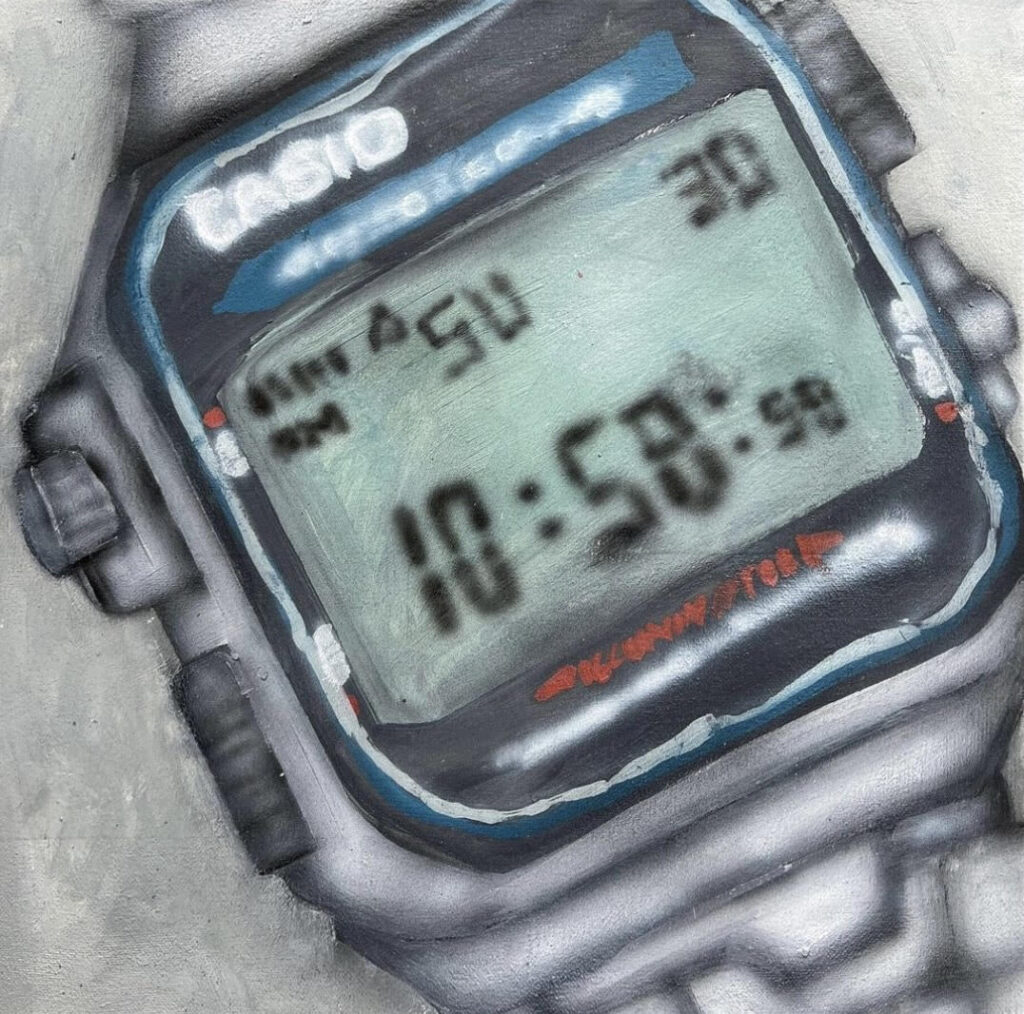
Can you also walk me through your creative process. From beginning, to end result?
Miriam: My creative process begins with an extensive list of ideas on my notes app, ranging from vague concepts to detailed thoughts. I capture anything that fascinates me with photos while out and about, so that I can go back to them later. The best ideas often emerge spontaneously and marinate in my mind until ready for realization. The practical part involves priming the freshly stretched canvas with diluted white color. A lot of times I over-paint an older artwork and find it exciting how certain structures and patterns shine through the thin layer of paint. I continue by sketching directly onto the surface with a pencil, charcoal or acrylic paint. The motif is then usually finished with the airbrush. Last but not least I complete the work by adding the background — a ritualistic finale for each painting.
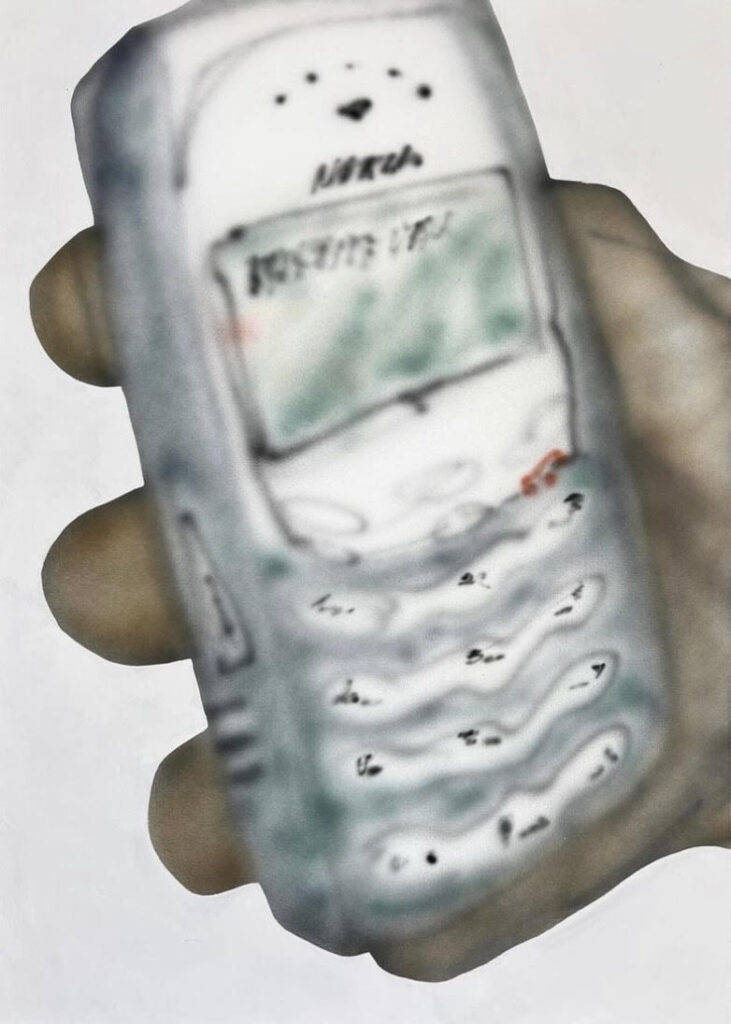
How do you approach color?
Miriam: Color selection is an intuitive process for me. Rarely do I pre-establish specific colors, using a lot of black and white, giving paintings a translucent gray film. I’m not a big fan of using paint straight out of the tube. I enjoy mixing most colors myself, adding a personal and profound touch to each hue.
Can you also tell me about your use of symbolism?
Miriam: Symbols make intermittent appearances in my work, representing contemporary lifestyles, personal references, or simply for aesthetic embellishment. Like choosing colors, the use of symbols is guided by intuition, adding layers of meaning to the narrative.
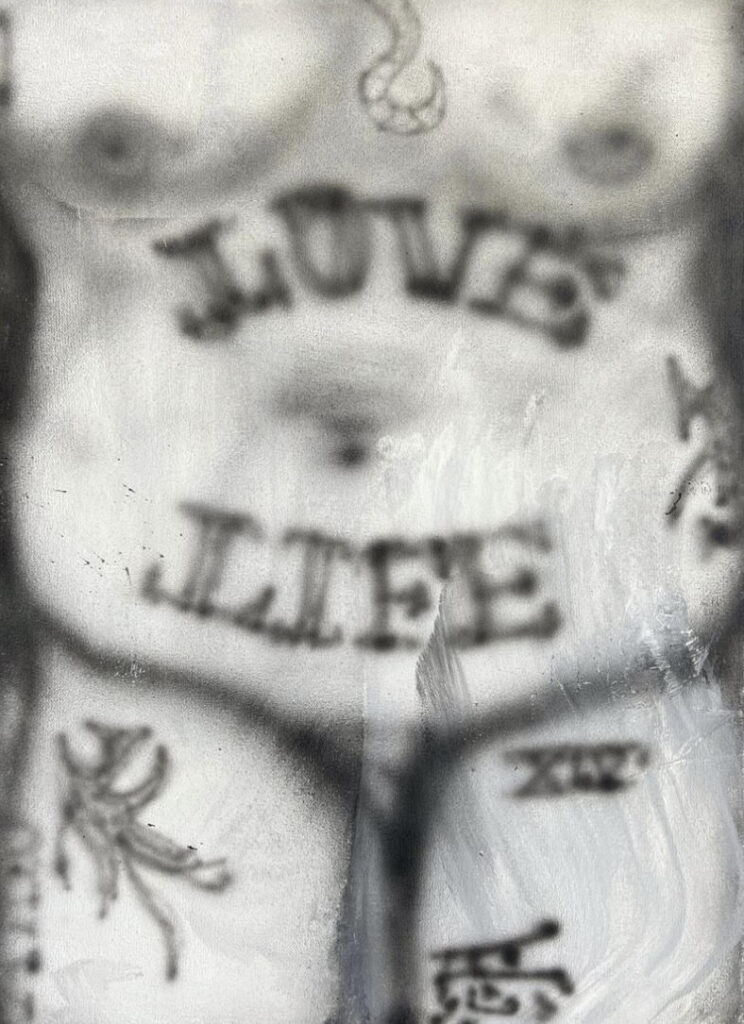
How do you deal with creative blocks?
Miriam: I wish that I had a good answer to this question. For me, admitting a lack of control is the first step. Acceptance, patience, and endurance become the guiding principles during creative blocks.
What motivates you?
Miriam: Hmm.. The act of painting itself is my primary motivation. You’re never done with painting, it’s an ongoing, relentless journey. Of course we cannot forget the fact that there’s bills to pay and mouths to feed.
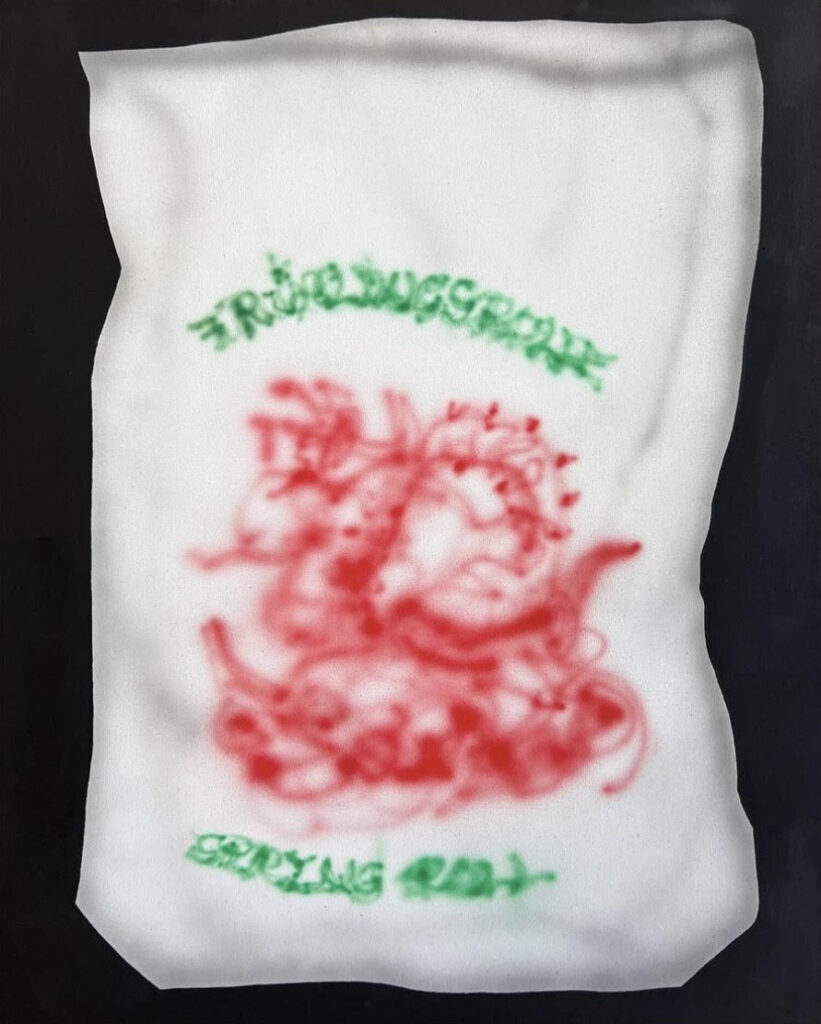
Anybody you look up to?
Miriam: People taller than me.
How would you describe a perfect day?
Miriam: A perfect day involves sharing good food and drinks with loved ones, basking in the present moment without a care in the world. Ideally, it would be in a warm, temperate climate (around 15-22°C). Oh, and there should be a dog to cuddle.
What song(s) are you currently listening to the most right now?
Miriam: While I don’t have a specific favorite right now, I’ve been enjoying a lot of Alex G lately.
